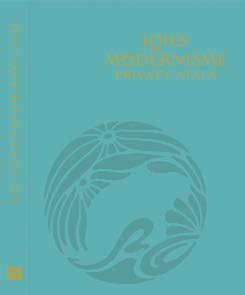Joies del modernisme català. Espais interiors [Jewels of Catalan Modernism. Interior Spaces]
Edited by Francesc Fontbona, with photographs by Consuelo Bancells
Barcelona City Council
and Enciclopèdia Catalana
Barcelona, 2014
417 pages
A wealth of literature already exists on Modernisme, an aesthetic and a movement that was, remember, virtually relegated for fifty years. Following the publication of some initial monographs that are now classics, such as the one by Cirici Pellicer from 1951, a series of partial exhibitions promoted by museums in Barcelona and Catalonia in the 70s and 80s enabled Modernisme to be studied as a global movement in the early 90s. This period saw the publication of the exhaustive volumes El modernisme (1991), a catalogue on the major exhibition of the same name at the Barcelona Museum of Modern Art, and El Quadrat d’Or. Centre de la Barcelona modernista [The Golden Square. The Centre of Modernist Barcelona] (1990), by the tireless Albert Garcia Espuche, that included a systematic catalogue of spec sheets for 150 buildings.
Since then there have been many more studies on Modernisme, as well as a range of books exploring it from a photographic perspective. Meanwhile, the Museum of Decorative Arts in Barcelona and the Association for the Study of Furniture have also been promoting works on one of the most prominent but least studied aspects of Modernisme: its impact on the art of everyday objects, from furniture design to the production of stained glass, fabrics, prints and trinkets. Everything, in short, that filled the interiors of those wonderful and exuberant structures.
Missing, however, was a book confirming what we already suspected: that, in addition to the great monuments of Modernisme that we know inside and out, many buildings in Barcelona and throughout Catalonia and Mallorca – which we pass by during our daily routines without given them anything more than the modest admiration brought about by the façades – harbour real treasures in their interiors. A book like this opens the doors to spaces that continue to be largely inhabited by families, and are therefore not accessible to the public, and where the wonders of Modernisme are revealed, sometimes less lavish, but equally valuable.
In 2011, Francis Fontbona edited a volume from the same publisher entitled Les joies del modernisme [The Jewels of Modernisme], featuring a considerable number of buildings. However, it was necessary to go a step further and explore not only these buildings, but also others that are not so significant but contain notable modernist areas. That is precisely what this new book accomplishes, which is edited by Fontbona himself and magnificently designed and photographed by Consol Bancells, an art historian at the University of Barcelona.
The book, featuring an introduction by Fontbona, is organised as a series of “visits” to 85 buildings. Each visit is represented as a photo essay together with a brief descriptive study by a specialist. Also included are data such as the building’s location, year of construction, architect and developer, as well as the space’s current use, a brief historical overview, and descriptions of the structure’s exterior and interior.
This is therefore a book that is full of surprises and new information for non-specialists. Moreover, its scientific and editorial rigour make it not only ideal for those who love the beauty created by the Modernisme movement, but also a kind of documentary catalogue of great use to scholars and custodians of our heritage.



